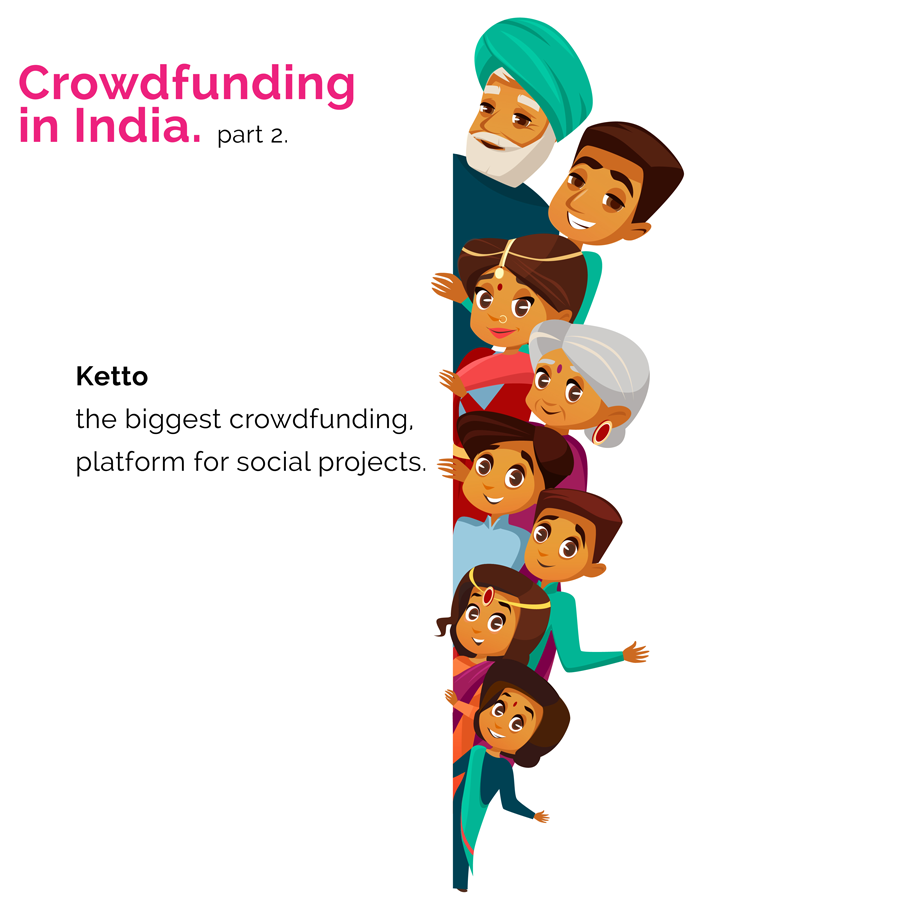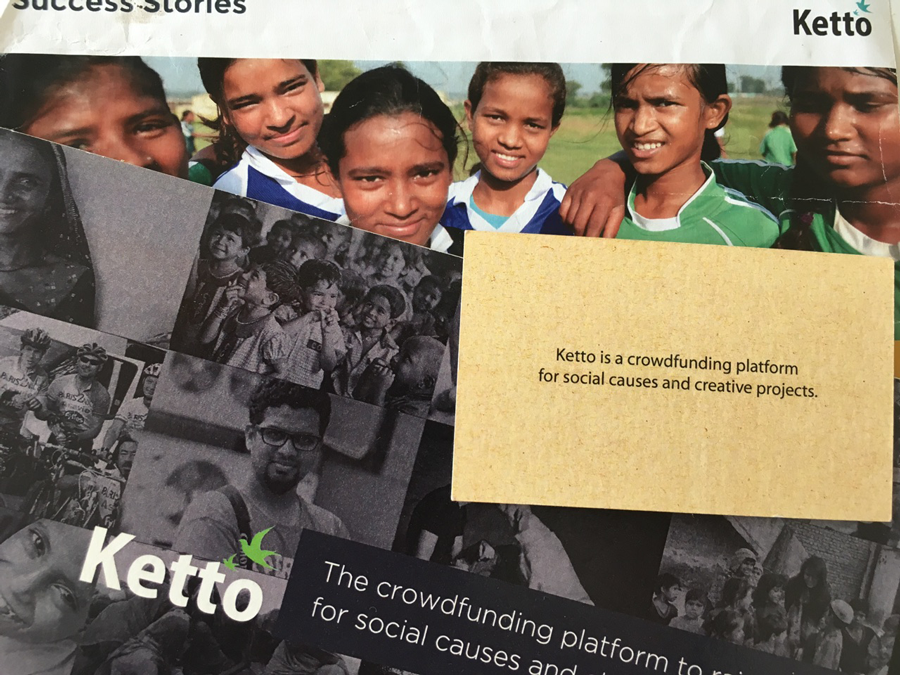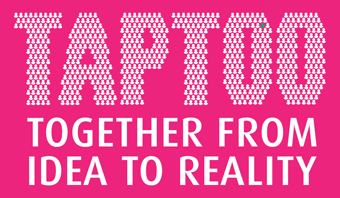Crowdfunding in India (part 2): Ketto Crowdfunding as alternative for lack of financial transparency
 Crowdfunding, the social solution.
Crowdfunding, the social solution.
Crowdfunding is an amazing way to realize dreams, especially in situations where banks or angel investors don’t want to invest. I am wondering if crowdfunding is a popular alternative in countries where access to a bank loan is more difficult than here in the Netherlands. Let’s find out in India!
India has two huge crowdfunding platforms for social projects: Milaap and Ketto. Via a Dutch contact, who coincidently happened to be friends with Kunal Kapoor, one of the founders of this donation-and-rewards-based crowdfunding platform, I got in contact with Ketto.
During my visit in Mumbai I spoke with founder Varun Sheth, about their well-organised and fast growing platform. Varun is responsible for the general management, while Kunal focuses on public relationships (which isn’t surprising, since Kunal is one of India’s famous Bollywood actors!). The interesting thing about Ketto is that they work closely with universities to keep their knowledge up to date and they see crowdfunding as a way to make the financial system more transparent.
What was your drive to start Ketto?
“I saw the difficulty of raising money. Too many people are looking for money, and only a few people were giving money. But who do you give your money to? So the idea was to create an online market place to solve problems for both sides: The givers didn’t know who to support financially, and the small seekers didn’t know how to find investors. I think this is not a typical Indian problem, but a common problem around the world: a lack of transparency in information. In India the challenge is bigger because information is not transparent enough.
I wanted to make things more easy and accessible for everyone to raise funds. My personal story is that I have a background in finance and I wanted to use the internet as a medium to raise money. I saw the lack of transparency as a big challenge. So, I thought why not use the internet to create more transparency?
When I started in 2011 I had never heard of Kickstarter and Indiegogo. I came to know about them in 2012. We started with a platform to help NGO’s. NGO’s were already active on online platforms. In that time it wasn’t called crowdfunding. People could donate via online websites to different non-profits. We saw that non-profits were aware of the online platform system. So it was much easier to start with non-profits because they understood our concept better and were looking for an easier way to raise funds online. So we built up our platform through helping non-profits: guiding them, helping them to make it more easier, getting them to use different features. A few years later we opened our platform for personal causes and creative projects too. Now we want to be an open platform for everyone who needs financial support.”
Why didn’t you want to stay specific for NGO’s?
“Well, because we got lot of questions from people from all around India and other countries in Asia. We felt there was an opportunity to grow. That is why we opened more topics. We felt that a larger number of people came on our platform with a different mind-set, so we wanted to provide more categories. Also, I really love to see the direct impact of our platform for our society. When something happens in the news, for example the earthquake in Cashmere, we can directly react by supporting a crowdfunding campaign. Or helping a person with finance for medical assistance.”
What are the challenges these days?
“Hmm, India has a lot of peer-to-peer lending (offline lending red.). Indians spend a lot of money on different kinds of projects. And there is a lot of potential. But still a lot of education is needed about the online peer-to-peer way of donating. That is why we provide weekly seminars, and Kunal works as an ambassador: talking on schools, universities, and so on. And one challenge is to automate our guidance to the crowdfunders. To guide them in a fast and effective way once they start a campaign at our platform. We want to guide them step-by-step. People didn’t know what to do after the launching of the campaign. A lot of people think placing your idea on the platform is enough, sometimes they don’t understand that they need to do the marketing.”
Do you have an advice to the industry or to the crowdfunders?
“We need better regulations and more financial facilities for micropayments to keep the system transparent.”
As learned from Ketto, crowdfunding is an interesting alternative to create a more transparent financial ecosystem.
Background on Ketto:
Ketto is a donation- and rewards-based platform for social and creative projects. People can choose if they want to provide rewards or a donation-campaign only; it offers a beautiful system for NGO’s. Dozens of projects get fundraised on a monthly basis. Ketto works together with a few business universities from England and India (IIM & IIT) and big parties such as Google and Calcutta Angels, to strengthen their system and to provide knowhow and students.
Crowdfunding in another country can help you to get to know the market and to attract new partners. I have noticed the possibilities of it. Do you want to know about the benefits of crowdfunding for your business? Feel free to contact! We like to help you!
Read here more experiences about crowdfunding in India >

Read also:



Leave a Reply
Want to join the discussion?Feel free to contribute!